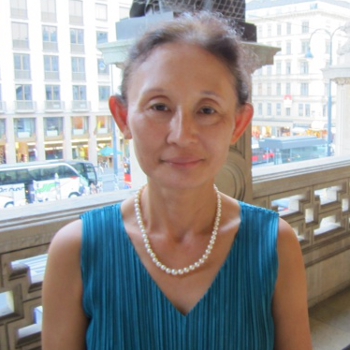A chance to see an opera production one saw almost 20 years ago is rare; even more so with Bayreuth productions, which are usually retired after four or five years, never to be seen again. The recreation of Heiner Müller’s 1993 production of Tristan und Isolde, which I attended as a Bayreuth neophyte in 1999, by his then assistant Stephan Suschke, now a theater director of Landestheater Linz, was just such an opportunity. Müller’s simple and abstract production held up very well, remaining one of the most moving theater experiences. It demonstrates that in opera, less is sometimes more. Without elaborate sets or props, with effective lighting and costumes, the symbolic world of love and death was presented with devastating emotional force. I remember the stillness in Bayreuth's Festspielhaus after the final chord; when the lights went up, many in the audience, including the ushers, were in tears. On Christmas Day, the Linz theater was not full but the grateful audience cheered long and hard after a memorable performance.
In Act 1, the ship carrying Isolde as a reluctant and angry bride for Tristan’s uncle, King Marke, is suggested by two strips of blue light as sea on both sides of the stage. Isolde and Brangäne are in the foreground, while Tristan and Kurwenal sit in an elevated but smaller space in the back, indicating the ship's deck. Orange squares suggest daylight; the rest of the stage is dark. All four wear long dark costumes (by Yohji Yamamoto), with a metal loop around their neck, symbol of the conventional world. When Tristan and Isolde drink the love potion, they shed these to reveal their true selves. King Marke appears in dark shadow, with an elaborate neck-piece prominent. Act 2 opens in darkness, illuminated with hazy light blue of the night. A phalanx of silver armor lines the floor, symbolizing Marke's presence. The love duet is sung in front stage, with their love-making indicated in changing poses, gestures and gentle touches. The stage blackens at Brangäne’s warnings. The whole scene is mesmerizing and hypnotic. When Tristan is stabbed by Merlot, the stage is lit with red, the color that returns with Isolde’s appearance towards the end of Act 3 as Tristan is dying. Ash gray is the color of Act 3, Tristan’s world of near death. Tristan sits in an armchair while a blind figure doubling as Shepherd and Sailor sits on a rock. The stage is littered with gray pebbles, a scene of absolute desolation. Isolde’s arrival is heralded in red and Tristan dies in her arms. Her transfiguration is signaled in gold, singing her Liebestod in a gold robe. She stands still as the music fades, a magical ending.
Markus Poschner led the Bruckner Orchester Linz in a masterful performance. The prelude began with slowly and he increased the pace and volume with such subtlety that we were not aware of being swept into the drama until it concluded with crushing waves of strings. While the orchestra sometimes overwhelmed the singers, it also played the love duet as chamber opera – Tristan and Isolde engaged in intimate dialogue accompanied by quiet strings rather than a frenzied declaration of love. Heiko Börner’s clarion tenor resonated with power and beauty throughout a demanding evening without any cut in the love duet. He showed little fatigue in Act 3. With his clear diction, the tragedy of the hero from childhood on was depicted with urgent immediacy, with Börner’s voice expressing every emotional contour of the monologue. Dutch soprano Annemarie Kremer was a fearless Isolde, with her compact and smooth voice soaring to heights with piercing intensity; her strength was in her rich middle voice, velvety and sensuous. While she seemed to tire towards the end of Act 2, she was astounding in Act 3, tender to her dying beloved, heartbreaking in her Liebestod.
Martin Achrainer (Kurwenal) with his youthful and clear baritone and Katherine Lerner (Brangäne) with her colorful and focused mezzo added drama. Learner’s rendition of Brangäne’s warning floated into the air out of darkness in seemingly effortless beauty, and she embodied a concerned friend to her mistress in nuanced singing and acting. Dominik Nekel’s King Marke was not quite up to the level of other principals, his voice lacking gravitas and sonority. However, he was an authoritative and sympathetic presence on stage, helpless to prevent a love/death of his two beloveds.
A symbolic and minimalistic staging, with ritualized and formal movement of performers, draped in timeless darkness with suggestive lighting all contributed to a satisfing evening as the time just flew by, tribute to a great director whose work has stood the test of time and succeeded in seducing the audience 25 years on.




